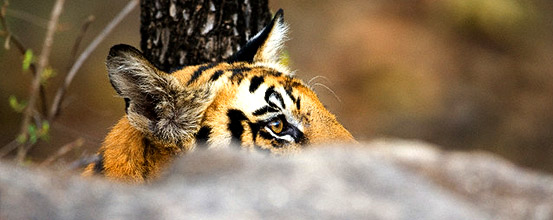» Ancient India » History of India
» Medieval India » Indian Cuisines
More About India..

» Bharatnatyam Dance
» Kathak Dance
» Kuchipudi Dance
» Odissi Dance
More Dances in India..

Sundarbans Wildlife sanctuary |
Offers complete information about Sunderbans National Wildlife Park, Sundarbans National Park India, Sundarbans wildlife Sanctuary, Sunderbans Tiger Reserve, Tigers of Sunderban India. |
About India » Ancient India » History of India » Medieval India » Indian Cuisines More About India.. 
Dances
in India
» Bharatnatyam Dance » Kathak Dance » Kuchipudi Dance » Odissi Dance More Dances in India.. |
 |


Wildlife
in
India » Corbett National Park » Bandhavgarh National Park » Ranthambore National Park » Kanha National Park More Wildlife in India.. 
Indian City Guide
» Agra City Guide » Delhi City Guide » Jaipur City Guide » Leh City Guide More Indian City Guides.. 
Special
Attractions in India
» Adventure in India » Ayurveda in India » Wildlife in India » Yoga in India More Attractions in India.. 
Rajasthan Tour Packages
» Fascination Rajasthan » Rajasthan Desert Tours » Rajasthan Wildlife Tours » Rajasthan Treasure Hunt More Rajasthan Packages.. 
Special Tour Packages
» Discover Kerala » Best of North India » Kerala Pilgrimage Tour » Taj Mahal Holiday More Special tour Packages.. |
Home ::
Indian Wildlife :: Sundarbans
National Park
Sundarbans National ParkLocation :
Piyali, West Bengal
About Sundarbans National Park The Ganges and the Brahmaputra form this alluvial archipelago of 54 islands watered by the Bay of Bengal. The islands Goasaba, Sandeshkali and Basanti form the northern boundary of the Sundarbans; on the south is the sea; to the west side of the Sunderbans park is the Matla and Bidya Rivers and to the east is the international boundary of Bangladesh. Flora in Sundarbans National Park
Major Wildlife Attractions of
Sundarbans There are crocodiles, which can be often seen along
the mud banks. Sundarbans national park is also noted for its conservation of
the Ridley Sea Turtle. There's is a incredible variety of reptiles also found
in Sundarbans, which includes King Cobra, Rock Python and Water Monitor. The
endangered river Terrapin, Batagur Baska is found on the Mechua Beach, while
the Barkind Deer is found only in Holiday Island in Sunderbans. Other Attractions In Sundarbans Netidhopani : At Netidhopani, the ruins of a 400 year old temple and legends lend mystery to the atmosphere. Bhagabatpur : Bhagabatpur is famous for having a hatchery of the largest estuarine crocodiles in the world. Kanak : Kanak is the nesting place of the Olive Ridley Turtles. Haliday Island : Haliday island is famous as last retrest of Barking Dear in India. Piyali : Piyali is the gateway to Sundarbans, 72-kms from Kolkatta by road and close to Sajnekhali, Sudhanyakhali, Netidhopani through waterways. A small river Piyali flows through the green paddy fields and mingles with river Matla. Picturesque Piyali delta makes an ideal romantic holiday destination. A beautiful tourist complex with accommodation and recreation facilities is also situated over here. Kaikhali : On your way to Sundarbans you cannot afford to miss Kaikhali Island, where nature is so alive and so colourful. An ideal picnic spot. Best Time to Visit - Sunderbans
National Park How to Get There Rail : Canning is nearest railhead, at a distance of 48-kms. Road : Road transportation is available from Kolkatta for Namkhana (105-kms), Sonakhali (100-kms), Raidighi (76-kms), Canning (64-kms), and Najat (92-kms), which are all near the Sunderbans and have access to the riverine waterways leading to it. Waterways : Sundarbans are accessible only by riverrine waterways. Motor launch facilitiy are available from Namkhana - Bhagabatpur Crocodile Project- Sagar Island -Jambudwip; from Sajnekhali - Sudhanyakhali-Buridabri- Netidhopan-Holiday Island; from Sonakhali - Gosaba; from Raidighi - Kalas.
|
|
|